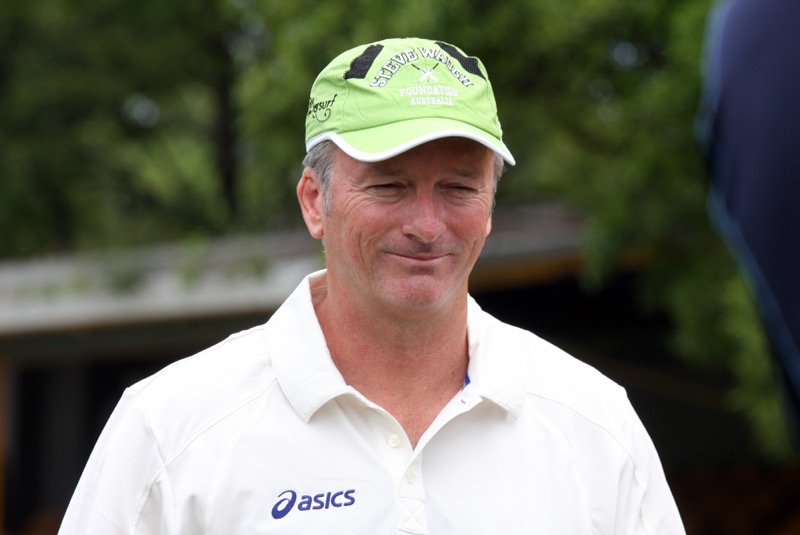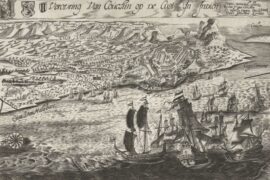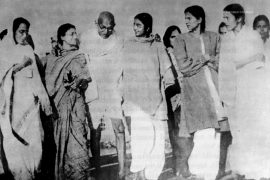Test, or one-day, cricket isn’t a place for easy pickings. That Steve Waugh was always wont to post Test/one-day centuries, against every type of bowling, or wicket, against bowlers in full fury, or sheer chicanery, exemplified the diminutive cricketer’s pragmatic, intuitive abilities and sheer professionalism. That he had done it often — just wherever he had gone on his mission of (re)discovery, time and again, was more than remarkable. It was the template of a champion batsman.
That Steve replaced Mark ‘Distinguished’ Taylor, who brought so much dignity, fair play and sincerity to the game, as his country’s Test and one-day captain, was not without exaltation — for a reserved man with a clean image — or, someone who had always been a cricketer of substance. It reflected his greatness. With a Test average of 51.06, Waugh was a thoroughbred. He scored runs when his team needed them the most.
Steve had the ultimate sporting responsibility, as John Howard, Australia’s former Prime Minister once put it, the second most important job in the country — after his, of course — in what is national sport, Down Under. Waugh had no such illusions. He thought that people in medicine had had far more important jobs than he did.
Realistic. Pragmatic
As captain, Waugh was as realistic, pragmatic, and honest as his illustrious predecessor, albeit a tad limited with his ideation process, or out-of-the-box strategies. His sense of straightforwardness brought charm, yes — and, more importantly, he was at ease handling the media, a pre-requisite for any skipper in modern sport. All in all, he was a reliable choice, and Shane Warne, who he once pipped at the post, as it were, was only reluctantly happy that an outstanding man had taken over the reins of captaincy — a job that’s his by right, albeit he ‘lost’ it with the one-day squad, down the line.
Steve was always a winner. He was, however, not bestowed with success on a platter. Elder to Mark, his equally gifted twin-brother, by four minutes, Steve, born, June 2, 1965, had had to go through a disappointing phase, early on, against the expectations of a populace uncompromisingly critical to failures in international cricket. At one point of his career, Steve was even thought of as a one-day wonder; nothing beyond that. The label disturbed him, yes. But, it made him all the more determined. Any other player would have easily buckled under pressure. Not Steve. He was made of sterner stuff. He took his time, and once he got into the groove, there was no looking back. He sliced his way and came of age in the traditional game.
To go back a bit. As Steve grew up in the frenzied atmosphere of the Packer era, he almost became an influential voice in favour of the shorter version, although it would be folly to say that he wasn’t aware of the true import of the five-day game. That was yet another ‘hangover’ his critics exploited, whenever Steve did not have a happy time in the middle in Tests.
For the sake of argument, Steve may have gelled well with the ‘pyjama’ game, for the simple reason that one has to keep pace with the times: to survive and prosper just as well. Change, after all, is the essence of life. No small wonder why Imran Khan often pleaded for the promotion of instant cricket in the US, the world’s most sports-loving country. Or, for that matter, the novel idea of one-day cricket with four innings — or, Twenty20, now being played almost anywhere you look, or turn.
Cricket was not only a passion with Steve; it was also the source of knowledge. Unlike most of his contemporaries, Steve was not afraid of knowing and understanding the history of the game. It was this sense of interest in cricket’s past, with the sport having a huge message to building good character in individuals, that made Steve look ahead, not only as a cricketer of repute, but also as a conscientious human being. His inquisitiveness and open-minded attitude brought him to the forefront of social causes — especially in community work for the uplift of less-privileged children.
Ever since his debut against India, at Melbourne, in 1985, Steve’s ability was evident; his figures weren’t. In the Tests that followed, Steve simply failed to score a single century much to the chagrin of his innumerable fans. So, he became a sitting duck to critics. But, his Aussie spirit, tenacity, and never-say-die intent did not desert him. The inevitable had to happen, some time. Steve posted his first Test ton in his 27th Test. The occasion was roseate. He was a relieved man. He never looked back again.
His Watershed
Steve’s watershed was World Cup 1987, not to speak of World Cup 1999. In the former, Steve, was given the sobriquet ‘ice-man,’ for his cool-as-a-cucumber attitude, under the most explosive of situations. His achievement roll-call: he was instrumental, with the bat and ball, in his team’s one-run victory over India; a 3-run triumph over New Zealand; his last-ditch rummage with the bat, which sent Pakistan, the big favourites, out of contention; and, that brilliant run-out (Bill Athey), at a crucial stage, in the final, against England, at Calcutta (now Kolkata). Result: Australia was on top of the world, and the country hailed its new hero. In the latter (WC 1999), he batted brilliantly, and skippered impeccably. Australia was now on top of the world, again, with a remarkable string of victories — a great team, with a great captain.
Steve’s real, big star-turn came in England in 1989, He was easily one of the finest in the business — not only as a batsman, but also as a fine ambassador of the game. As a batsman, he had always followed the rules of classical batsmanship, even in the biff-bang milieu of one-day cricket. He stood at the crease nicely, side-on. His stance allowed him to move quickly in whatever direction he wanted to. His reasonably light bat provided him the ease and freedom to go for his strokes, with his knees flexed for the execution of his handsome essays square of the wicket. Efficient on front- and back-foot, Steve did not hang his bat. His willow was well ‘grounded;’ and, it attained fruition once the bowler sprayed the red/white cherry at him. The outcome: a fine motion of the anatomy, feline touch and, then, masterly action.
Not that the gods had always been kind to Steve. A major injury to his back, corrected by surgery, and a blood disorder, which was quickly diagnosed and treated well, are two examples. It was also good augury that the usage of advanced therapy aided him, and it did not leave any psychological visiting cards on his pyrotechnics — during his playing days.
Steve’s great run in England, in 1989, was followed by his sterling knocks, in the West Indies, where he notched up a courageous 200. His glorious effort helped Australia trounce the calypso stars, in their own ‘den,’ after ages. Not only that. His fabulous run against South Africa, and other cricket playing nations, juxtaposed by his spirited canvas of consistency, were all high watermarks of his fabulous career.
Steve’s record is more than impressive. Tests: matches 168, innings 260, not out 46 times, runs 10,927, 32 hundreds, 50 fifties, highest score 200; average 51.06. ODI: matches 325, innings 288, not out 58 times, runs 7,569, highest score 120, 3 hundreds, 45 fifties; average 32.90. Bowling: Tests: 92 wickets; ODI: 195 wickets.
That he was compared with Sir Don Bradman, the greatest Australian that ever held the willow in hand, in some quarters, was not so much of a hyperbole, or media orchestrated exercise. Steve has had a grand record: one that supports the proof of his brilliant abilities, thanks to his remarkable congruity. One could, therefore, without much hanky-panky, allot him the tag of being one of the best batsmen, of his type, in the world of his time.
Steve was a cricketing visionary. He was a legend too — one who knew only too well that cricket could well be an unforgiving game. A hero, today; or, a fairy-tale gone sour, tomorrow. So, he did his best — in the only manner he possibly could — by way of his own measure of probability analysis. A sure, optimistic avenue to sustained success.
Steve’s type of player is born — not made.
-30-
Copyright©Madras Courier, All Rights Reserved. You may share using our article tools. Please don't cut articles from madrascourier.com and redistribute by email, post to the web, mobile phone or social media.Please send in your feed back and comments to [email protected]











